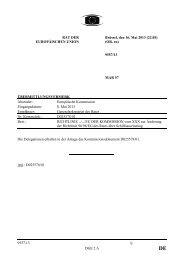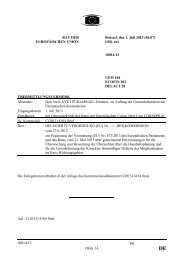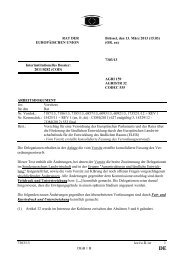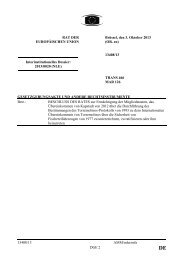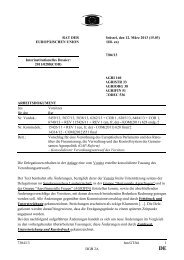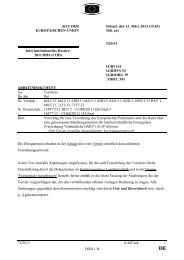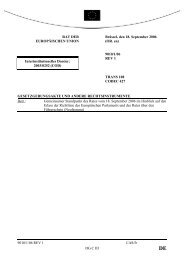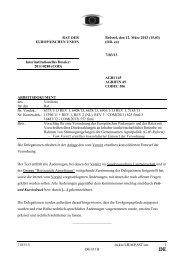EU Concept for Force Generation - the ESDC
EU Concept for Force Generation - the ESDC
EU Concept for Force Generation - the ESDC
Create successful ePaper yourself
Turn your PDF publications into a flip-book with our unique Google optimized e-Paper software.
10. MS' commitments of assets and capabilities are <strong>the</strong> basis of <strong>the</strong> whole FG process. Ideally, <strong>the</strong><br />
<strong>for</strong>ces <strong>for</strong> an operation should be committed without caveats. Never<strong>the</strong>less, MS are ultimately<br />
responsible <strong>for</strong> <strong>the</strong> conditions upon which <strong>the</strong>ir committed <strong>for</strong>ces are made available to <strong>the</strong><br />
<strong>EU</strong>. Caveats should be stated by TCN as early as possible to allow timely modifications of <strong>the</strong><br />
Statement of Requirements (SOR), and as a consequence to adjust operational planning<br />
accordingly.<br />
11. The <strong>EU</strong> can invite third States to contribute to an <strong>EU</strong>-led military operation. When a third<br />
State participates, <strong>the</strong> principles and guidelines described in this document will apply.<br />
12. The <strong>for</strong>ce must be tailored to satisfy <strong>the</strong> specific requirements of <strong>the</strong> operation. It is highly<br />
likely that <strong>the</strong>re will be potentially different capability requirements in terms of response,<br />
readiness and <strong>for</strong>ce size <strong>for</strong> each <strong>EU</strong>-led military operation. Reserve <strong>for</strong>ce requirements at all<br />
levels of command should be addressed at <strong>the</strong> earliest possible stage of <strong>the</strong> FG process.<br />
13. When a rapid response is required, <strong>the</strong> quick designation of <strong>the</strong> OpCdr and <strong>the</strong> FCdr, <strong>the</strong><br />
simultaneous activation of <strong>the</strong> OHQ and <strong>the</strong> FHQ, as well as <strong>the</strong> identification of possible<br />
capability packages and command and control structures will facilitate an accelerated FG<br />
process (Ref. C). The mechanisms described in <strong>the</strong> Maritime and Air Rapid Response<br />
concepts (Ref D and E) will facilitate <strong>the</strong> identification of potential capabilities without<br />
creating additional ''standing <strong>for</strong>ces''. <strong>EU</strong> Battlegroups on standby could benefit from <strong>the</strong><br />
mentioned mechanisms <strong>for</strong> <strong>the</strong> identification of relevant assets and required capabilities <strong>for</strong> a<br />
particular operation (Ref. F).<br />
F. FORCE GENERATION PROCESS<br />
14. FG <strong>for</strong> <strong>the</strong> build up of an <strong>EU</strong>-led <strong>for</strong>ce includes <strong>the</strong> identification of <strong>the</strong> appropriate assets and<br />
capabilities and <strong>the</strong> commitment of TCN to pledge and activate <strong>the</strong>m. It also includes <strong>the</strong><br />
subsequent assembly and deployment to <strong>the</strong> designated JOA by TCN, coordinated by <strong>the</strong><br />
OHQ/FHQ (Annex A). The process can be divided into three different phases: identification,<br />
activation and deployment.<br />
10690/08 ALT/rm 7<br />
<strong>EU</strong>MS EN




